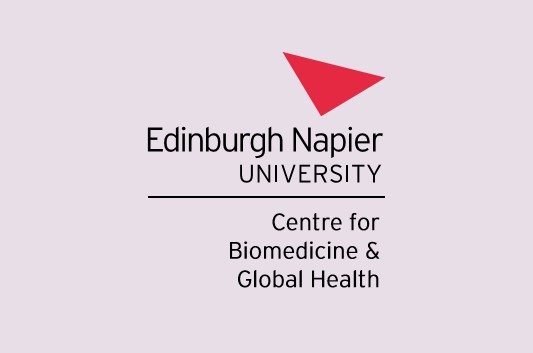This grant is one of the largest of its kind and represents a significant achievement for an early career academic with a background in nursing.
The study, titled ExtraCECI (Extra community-based enhanced care intervention) aims to recruit around 650 patients. A smaller feasibility study of CECI suggested that participants felt the approach had the potential to improve their quality of life.
ExtraCECI will see medics from randomly selected HIV clinics trained to give a holistic assessment of the physical, psychological, social, and spiritual well-being, of their patients. This will then allow them to work together to plan and deliver their care in an outcome-focused approach.
ExtraCECI is now set to get underway this month after being backed by funding from the Medical Research Council. If successful, the results of this research may provide evidence to help make ExtraCECI a part of routine HIV/AIDS care in Ghana, helping those affected for years to come.
Professor Andrea Nolan, Principal and Vice Chancellor of Edinburgh Napier University, said: “Securing such a significant level of backing for this programme of work is a major achievement for Mary.
“Given her background in nursing, she will be well aware of how ExtraCECI has the potential to make a positive difference to people’s lives in Ghana.
Although led by Dr Mary Abboah-Offei from ENU’s School of Health and Social Care and Centre of Biomedicine and Global Health, it will also involve academics and researchers from Kings College London, the University of York, and the University of Ghana. Read the full news story here: https://www.napier.ac.uk/about-us/news/extraceci
Hear from Dr Mary Abboah-Offei:
Dr Abboah-Offei, who is from Ghana, began her journey in healthcare research by working as a nurse in emergency care there. Working as a nurse at Surgical-Medical Emergency Unit of the Korle-bu Teaching Hospital in Ghana provided the opportunity for me to care for patients with various diagnoses including HIV/AIDS. I was particularly drawn to HIV/AIDS as most of the patients I encountered with the disease often deteriorate rapidly due to the shock of discovering that they were HIV positive. I began to investigate how best to care for and support such individuals to improve their well-being, health outcomes, and quality of life. People living with HIV/AIDS (PLWHA) have complex physical, psychological, social, and spiritual needs following diagnosis and poorer health related quality of life (QoL) than the general population. However, the greatest attention has been paid to viral suppression at the expense of broader psychological, social, and spiritual concerns that persist despite treatment advances. Thus, care that addresses the multidimensional concerns of PLWHA requires a person-centered approach, nevertheless, person-centered care (PCC) is an approach that evolved in high-income settings with limited data available to model contextually and culturally appropriate PCC in Ghana.
As a staff nurse, with limited research background, I sought for an opportunity to advocate for PCC for PLWHA in the context of Ghana backed by research evidence. Therefore when I got the opportunity to study masters in nursing at Queen Margaret University, I developed a research proposal to explore the potential of integrating palliative care into HIV/AIDS care for my masters dissertation; knowing fully well that palliative care addresses broader psychosocial and spiritual concerns of patients using a person-centred approach. Considering the duration of the masters programme, I could not implement this proposal, which means that I had to find another opportunity where my proposal can come to fruition. Two years after my masters degree, I won a fully funded scholarship from the Ghana Education Trust Fund to do my PhD at King’s College London using the research proposal I developed for my masters dissertation. At this point I knew the time had finally come to implement my proposal to in order to generate evidence to enable an acceptable and feasible practice of PCC in Ghana. So for my PhD, I followed the Medical Research Council (MRC) guidelines for developing and evaluating complex interventions, where I completed the first two stages (intervention development and feasibility testing) of the MRC framework. The intervention I developed and tested was community-based enhanced care intervention (CECI) with components including : (i) a training programme for healthcare professionals on person-centred communication, (ii) holistic assessment of PLWHA’s symptoms and concerns in the domains of physical, psychological, social, and spiritual wellbeing using a structured tool, (iii) a care plan to facilitate collaborative care planning and delivery, (iv) mentorship support for healthcare professions and fidelity monitoring. The CECI gave us some potential effects that we currently want to test its effectiveness and cost effectiveness, which is also the implementation of stage 3 (Evaluation of effectiveness and cost-effectiveness) of the MRC framework. Key lesson learnt is about the value of involving PLWHA in their care decisions, which is a motivation for adherence and an ‘extra’ component being added for CECI refinement to empower PLWHA to engage, participate and contribute to their care decisions, hence the name ‘ExtraCECI’.
Consequently, I am very thrilled to have received this funding from the MRC together with my collaborating institutions, whom I have established links with during my PhD and Post-doc period to be able to deliver the ExtraCECI project. King’s College London where I developed and tested CECI will be providing mentorship to support my development as an early carrier researcher as well as lead the capacity strengthening aspect of the project, working with all early career researchers on the project on research leadership and person-centred care skills tailored to researcher needs. University of York where I did my post-doc and have established links with the York Trials Unit, with expertise in cluster randomised controlled trials, the main methodology for the ExtraCECI project. They will also lead capacity strengthening in clinical trial leadership, process evaluation, training early career researchers and to build capacity towards establishing a trials unit in Ghana. Finally, University of Ghana is hosting the ExtraCECI project in Ghana, where majority of project staff will be based, enabling strong low- and middle-income country leadership, making adequate provision for training and support for early career researchers.
I am delighted to have the opportunity to begin this study. Having previously worked in healthcare in my home country, this feels like a way of giving back. Looking back on my journey from working as a nurse and having this vision to improve care outcomes and quality of life for PLWHA about 15 years ago, this meant the world to me because I could have given up along the way. However my passion and determination to be an advocate for person-centred care has brought me this far. I am particularly excited to be leading this project as my ultimate dream would be to see person-centred care adapted as part of routine care for PLWHA as well as replicated to the whole health system in Ghana. Person-centred care puts the individual at the centre of their care, helping them to access the care they need, when they need it, by involving them in their own care decisions.
I hope this wider trial can lead to a better quality of life for people living with these conditions.




